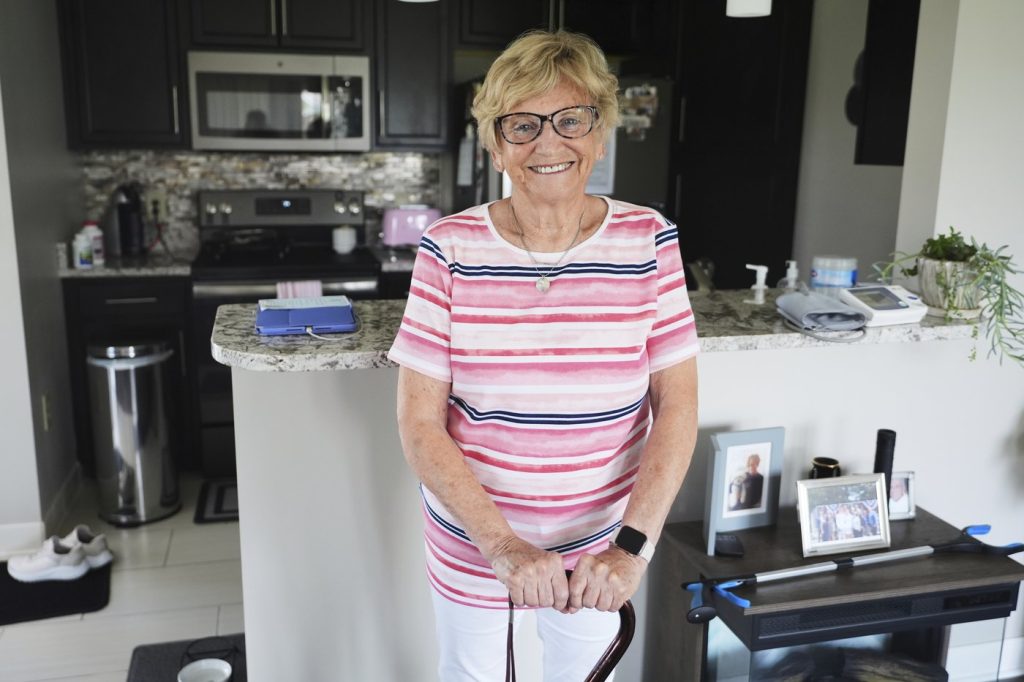Rose Hammond, an 85-year-old resident of Sylvania Township, Ohio, has long been advocating for a reduced speed limit on Mitchaw Road, a two-lane road adjacent to her assisted living community. This road also passes a church, two schools, and a park that hosts numerous youth sports leagues. Her urgent plea to local authorities reflects growing concerns about vehicular speeding, particularly from motorcycles that race by the area on a near-daily basis.
In response to mounting public pressure, Sylvania Township commissioned a study in March to evaluate whether the current 55 mph speed limit on Mitchaw Road is appropriate. Surprisingly, their findings indicated that, based on traditional guidelines, the speed limit should actually be raised to 60 mph, rather than lowered as Hammond and other community members had hoped. This guidance originated from outdated studies on rural roads from the 1930s and 1940s that heavily influence speed limit regulations across the United States, even in denser urban environments.
A central principle emerging from these historical studies is the 85% rule, which posits that a road's speed limit should correspond to the speed of the 15th-fastest vehicle among 100 vehicles traveling on it under free-flowing conditions. While this approach aims to establish a speed limit based on what most drivers deem reasonable, critics argue it results in a troubling feedback loop. As drivers begin to speed, speed limits are often adjusted upward to match this behavior, creating a cycle of increasing speed limits that may not prioritize safety.
Jenny O’Connell, the director of member programs for the National Association of City Transportation Officials, highlights this issue, asserting that this methodology fails to account for the safety of all road users, including pedestrians. In response, her organization has developed an alternative approach called “City Limits,” which advocates for setting limits based on a deeper understanding of road usage and potential conflicts, rather than a simple numerical benchmark derived from past practices.
The urgency of re-evaluating speed limits has intensified as the U.S. grapples with rising traffic fatalities. In an update from the Federal Highway Administration, it was emphasized that the 85% rule is not a mandatory standard and should not dominate local speed limit decisions. Instead, the agency encourages states to consider local factors such as pedestrian activity and crash history when determining speed limits.
Despite these developments, some states continue to cling to the simplicity of the 85% rule. For example, California remains a staunch proponent of this guideline, although recent legislative changes have provided some leeway for local governments to set lower limits in the interest of safety. Advocates for pedestrian and cyclist safety argue that these adjustments are inadequate and call for further transformations in how speed limits prioritize all road users rather than simply cars.
Conversely, others, including Jay Beeber from the National Motorists Association, argue that adhering to the 85% rule helps maintain speed consistency, minimizing the disparity between those who follow the limits and those who exceed them significantly.
Historically, the U.S. established a national maximum speed limit of 55 mph in the 1970s, which later increased to 65 mph and was fully repealed in 1995. Since that time, many states have raised their limits, with North Dakota recently becoming the ninth state to permit 80 mph speeds on certain highways. Furthermore, Texas has even introduced a stretch of road where speeds can reach 85 mph. Research from the Insurance Institute for Highway Safety has shown that every 5 mph increase in state speed limits correlates to a significant increase in fatality risks, emphasizing the dangers posed by higher speed limits.
Back in Sylvania Township, local officials are hoping to bring change to Mitchaw Road, advocating for a potential speed limit drop from 55 mph to 40 mph or lower. However, Ohio law stipulates fixed maximum speeds for various road types, irrespective of the 85% rule's findings. There are ongoing discussions in Ohio about updating these guidelines to enable cities to better accommodate pedestrian and cyclist safety.
As the situation stands, the speed limit on Mitchaw Road will remain unchanged for now. Rose Hammond expresses her disillusionment at the slow pace of change after years of outreach to government officials. Her frustrations capture the essence of a broader conversation about how speed limits are determined and the need for a shift toward safer, more community-focused approaches.










